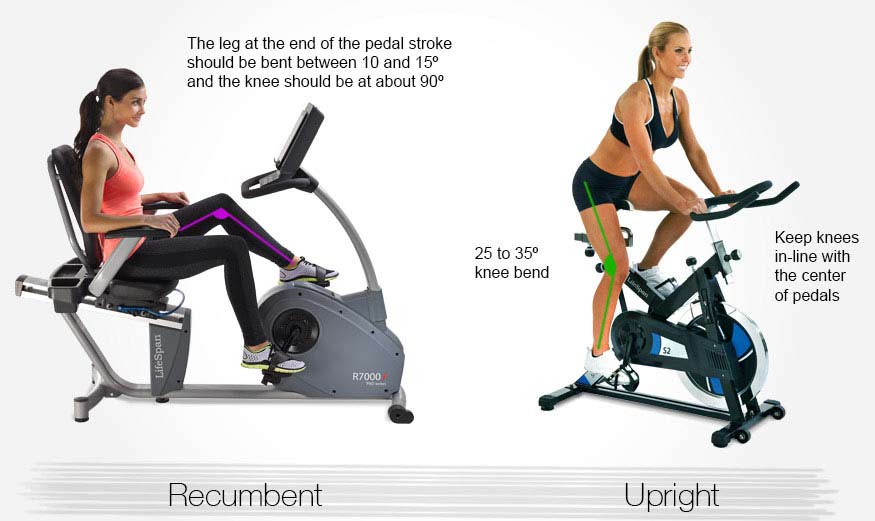What is Indoor Cycling?
Over 20 years ago Johnny G, a South African cyclist and former professional cyclist, introduced Spinning® to the world. (Spinning is now a Registered Trademark of Mad Dogg Athletics, Inc.) He transformed the stationary bike you see sitting in the gym into a group fitness program called indoor cycling.
What is indoor cycling? Indoor cycling is an organized activity with a group fitness format. Classes focus on endurance, strength, interval, and high intensity training using the stationary bike. The indoor cycle that evolved from the stationary bike is designed with a heavy weighted flywheel, chain drive, and friction resistance offering an experience similar to that of a road bike.
If you are looking into purchasing a stationary bike, but aren’t sure which if an indoor cycle is for you, you can learn more about the different styles available and compare stationary bike benefits and their specific uses. Keep this in mind as you read about indoor cycling and it’s positive impacts to your workout routine.
According to the American Council on Exercise (ACE) if you are looking for a cardiovascular workout that offers a large expenditure of energy with minimal impact on your hips, knees and ankles, indoor cycling is an excellent option in both areas. With a little bit of knowledge you can ensure that an indoor cycling class is the most challenging workout of your week and also a lot of fun!
Benefits of Indoor Cycling
Indoor cycle trainers are similar to other exercise equipment you find in the gym with regard to health benefits. The American College of Sports Medicine (ACSM) specifically mentions the following fitness benefits with regard to indoor cycling:
1. Low Impact
Indoor cycling is a low-impact activity. People recovering from orthopedic injuries often participate in indoor cycling as part of the rehabilitation protocol. If cycling is done correctly, there is minimal impact on the hip, knee, and ankle joints. A person, whether recovering from injury or not, avoids the pounding associated with other activities such as running.
2. Muscular Endurance
Muscular endurance refers to the ability of a muscle to continually and repeatedly exert force over an extended period of time. When you are pedaling against resistance in indoor cycling you increase the endurance of the muscles in the legs to include the quadriceps, hamstrings, gluteus, and the calf muscles. Working these muscles also helps to strengthen surrounding bones, tendons, and ligaments increasing overall strength so that activities of daily living can be performed with ease.
3. Stress Levels
We’ve all heard about the runner's high.
An indoor cycling class can provide that same rush of adrenaline and a release of happy mood-inducing neurotransmitters known as endorphins.
Endorphins tend to create feelings of euphoria, lower stress levels, and enhance the body's immune response.
4. Cardiovascular
ACSM recommends that healthy adults should get at least 150 minutes of moderate-intensity exercise per week. Exercise recommendations can be achieved through 30-60 minutes of moderate-intensity exercise (five days per week) or 20-60 minutes of vigorous-intensity exercise (three days per week). An indoor cycling class can keep your heart rate well within a vigorous range for approximately 45-60 minutes. As with all continuous cardiovascular activity, an indoor cycling program can help lower the risk of coronary artery disease.
Setting Up Your Bike For Maximum Results
For the most part, every piece of exercise equipment in the gym needs to be programmed
or set according to your individual needs and body type. You don’t want to place undue stress or strain on the muscles and joints of your body. The following tips will ensure your bike is properly setup before you start cycling.

The exercise bikes featured in the graphic are the LifeSpan R7000i Commercial Recumbent Bike and the LifeSpan S3 Indoor Exercise Bike.
1. Seat Height
This adjustment puts your body in a comfortable, as well as powerful, riding position. Your leg should be lengthened as far as possible when the pedal is at the floor and at the same time you should be comfortable in the seat and feel you can easily reach this bottom-most position.
2. Handlebars
When adjusting the handlebars move them up or down, and forward and backward so that you can reach them comfortably while keeping a tall back, an open chest, relaxed shoulders, and a small bend in your elbows.
3. Seat Forward/Backward
The seat adjustment is designed to allow you to align your knee in neutral
over the pedal. The center of this adjustment fits the average rider.
4. Foot Placement
After making the seat and handlebar adjustments, hop on the bike and place your foot in the tennis-shoe cage. Position the ball of your foot in the center of the pedal. Tighten the strap. Take a few pedal strokes both in and out of the saddle. Change anything that doesn’t feel comfortable. If you are taking a cycling class, the instructor should be able to assist you in making any adjustments.
Is Indoor Cycling For You?
Do you want to go it alone or join a cycling class? Because cycling is one of the best cardiovascular activities found in gyms today, give both options a try and find the best fit for you. If joining a group class, find a qualified instructor that helps you set up your bike, reviews safety information, and can motivate you to derive the maximum benefits of the activity. If going it alone in the gym, ask the exercise physiologist or fitness instructor to help you get started and show you the proper technique for a productive ride.
What are you waiting for? Start today on the road to fitness and pedal your way to better health!









